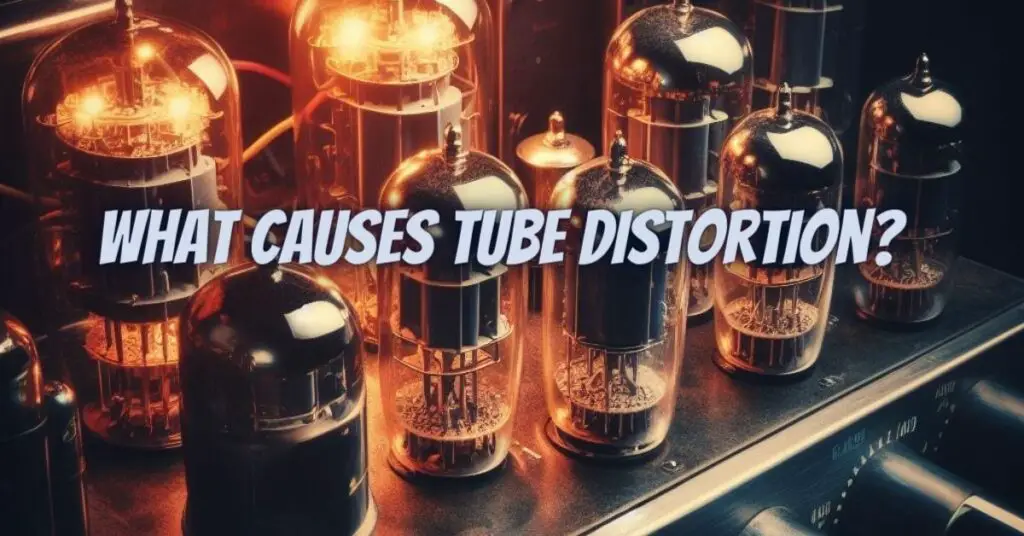Tube distortion is a type of audio distortion that is caused by the vacuum tubes in an amplifier. It is a type of even-order harmonic distortion, which is generally considered to be more pleasing to the ear than odd-order harmonic distortion, which is produced by solid state amps.
Tube distortion is caused by a number of factors, including:
- The type of tube: Different types of tubes have different distortion characteristics. For example, EL34 tubes are known for their aggressive sound, while 6L6 tubes are known for their warm and mellow sound.
- The bias of the tube: The bias of a tube is the voltage that is applied to the grid of the tube. A higher bias will produce more distortion, while a lower bias will produce less distortion.
- The amount of input signal: The more input signal that is applied to a tube amp, the more distortion it will produce. This is because the tubes are being pushed harder.
- The output transformer: The output transformer of a tube amp can also affect the amount of distortion produced. Some output transformers are designed to produce a more distorted sound, while others are designed to produce a cleaner sound.
Tube distortion is a popular feature of many guitar amps, as it can add warmth, richness, and sustain to the sound. It is also used in some other audio equipment, such as recording consoles and microphones.
Here are some tips for controlling tube distortion:
- Use the gain control: The gain control on a tube amp controls the amount of input signal that is applied to the tubes. A higher gain setting will produce more distortion, while a lower gain setting will produce less distortion.
- Use the volume control: The volume control on a tube amp controls the output level of the amp. A higher volume setting will produce more distortion, while a lower volume setting will produce less distortion.
- Use the bias control: The bias control on a tube amp controls the bias of the tubes. A higher bias setting will produce more distortion, while a lower bias setting will produce less distortion.
- Use the EQ controls: The EQ controls on a tube amp can be used to boost or cut different frequencies. Boosting the mids will increase the amount of distortion, while cutting the mids will reduce the amount of distortion.
- Use an overdrive pedal: An overdrive pedal can be used to add distortion to a tube amp. Overdrive pedals come in a variety of different flavors, so you can find one that produces the type of distortion that you like.
By following these tips, you can control the amount of tube distortion produced by your amp and achieve the sound that you want.


